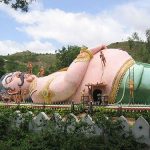
From 5 century B.C, Hindus used to live a systematic life. In that system, a person needs to undergo four stages of life, called ‘Ashramas’. These four stages of life ashramas are- ‘Brahmacharya’ (the student life), ‘Grihastha’ (the householder life), ‘Vanaprastha’ (the solitary life), and ‘Sannyasa’ (the ascetic life).
So, what are these four stages of life in Hinduism?
-
Brahmacharya:
In Brahmacharya ashram, a person leaves his house and stay at Guru’s (teacher) house for education. For almost the age of twenty-five, he lives there and gains the knowledge of spirituality and practical things. He concentrates on learning life skills and resolute devotion towards his teacher. During the Brahmacharya ashram period, the scholar is called ‘Brahmachari’.
-
Grihastha:
Throughout this period, a person needs to earn for living and take responsibility to support his family. In Grihastha dharma, one gets married and indulge in the Kama or sexual desire. In Grihastha ashrama, imitating wealth and other material gratification is inevitable to spend life.
-
Vanaprastha:
Vanaprastha ashrams in India is, when a person gets old, he leaves his beloved family behind to spend the Vanaprastha life. He lives in a forest hut and starts praying to god. At this certain age, this is really a harsh life to continue.
-
Sannyasa:
Sannyasa Ashram is the last ashrama, where a person eliminates his desire, fear, lust, love, hope, and responsibilities. He can’t have any worldly attachment to anything. The person should entirely focus on the devotion of God, and his soul will seek Moksha.
These four stages of life for Hindu were necessary for the old era. Though in present Hindu society, the Vanaprastha and Sannyasa stage has been obsolete. People end up in the Grihastha phase for entire life. Despite this, Hindus still can choose whatever life they want to elapse.
Feature Image Credit: Photo by Sebastian Pena Lambarri on Unsplash. (free for commercial use)




